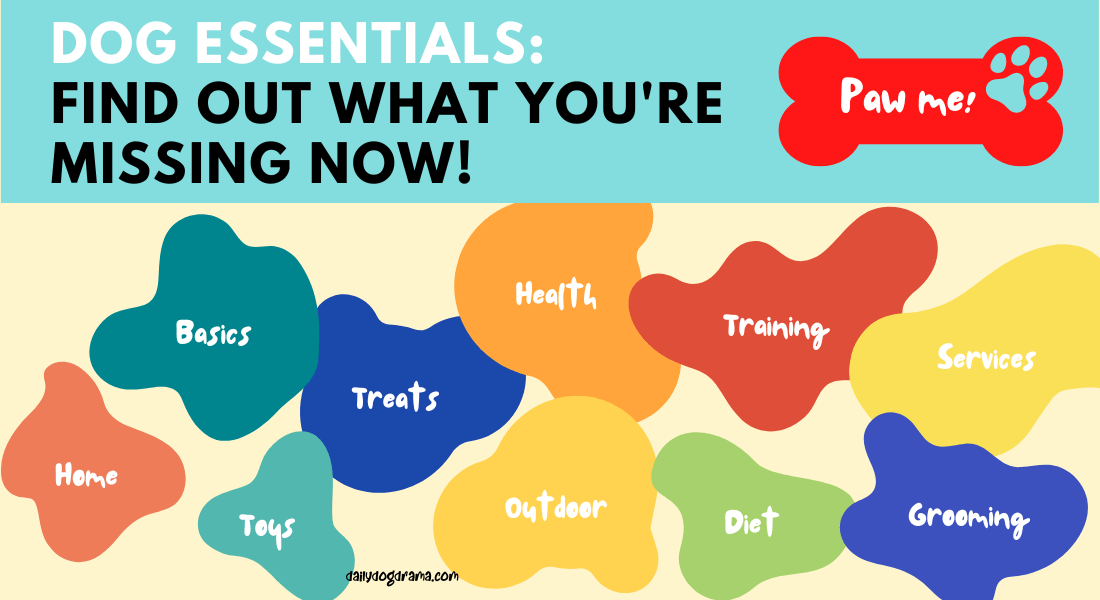Do you know what DOG ESSENTIALS you are missing out? Find out now!
Zack Keithy, our author, is a certified veterinarian technician (UC Blue Ash) for over 6 years (contact him here). The articles written here are based on his expertise and experience, combined with a review by our expert vet reviewers including Dr M. Tarantino. Learn more about us here.
My dog loves bully sticks. I never gave them to her before, but when we visited a friend some time back, he gave her a bully stick as a treat. She’s been obsessed ever since!
But then I noticed that she’d been having diarrhea for a couple of days after eating them—and it got me wondering if there was something about bully sticks that might be causing it.
Can bully sticks cause diarrhea?
Yes, it is possible that bully sticks cause diarrhea, but this is only likely if your dog was overfed or if it had an existing digestive issue that does not take to bully sticks well. Bully sticks are very high in protein and over-ingestion might just cause diarrhea!
In this post, we look closer at some other factors that might be at work and how you can overcome this issue.
Medical Questions? Talk to a Veterinarian 24/7.
Connect one-on-one with a licensed vet who will answer your questions in minutes.
*Article may contain affiliate links to retailers like Amazon and Chewy. Learn more on our disclosure page.

- Why do Bully Sticks Cause Diarrhea in Dogs? 5 Possible Reasons
- Our Top Recommendation for Bully Sticks
- What Are Bully Sticks Made Of?
- Benefits of Feeding Your Dog Bully Sticks
- Are Bully Sticks Hard for Dogs to Digest?
- Common Bully Stick Stomach Problems
- Frequently Asked Questions (FAQs)
- In Conclusion: Can Bully Sticks Cause Diarrhea?
Why do Bully Sticks Cause Diarrhea in Dogs? 5 Possible Reasons
In general, your dog is unlikely to suffer from diarrhea or any related issues (such as vomiting) by chewing on a bully stick.
However, there are a few factors that can increase the risk of your dog developing diarrhea.
We look at 5 possible reasons.
1. Types of Ingredients Used
First, it’s important to understand that not all bully sticks are created equal.
Some brands of bully sticks are made from 100% grass-fed free-range cattle, while others contain ingredients that are less digestible for dogs (like corn syrup or wheat flour).
Also, some bully sticks might use chemical preservatives during the manufacturing process, which can cause an allergic reaction in some dogs.
You should always check the ingredients list before giving your dog a bully stick to make sure that it’s safe for him.
2. Your Dog’s Digestive System
If your dog is older or has any digestive issues, he may be more likely to experience diarrhea after eating a bully stick.
Bully sticks contain a lot of fiber, which can cause your dog’s digestive system to work overtime.
If he has a sensitive stomach or is prone to diarrhea after eating certain foods, then bully sticks may not be the best option for him.
3. Dietary Needs
Because bully sticks are high in protein, if your pup eats too many at once it may overload his system and cause him to have an upset stomach or other digestive issues like diarrhea.
Just make sure that it does not have easy access to the bully sticks in your home and that you do not feed it more than the recommended amount.
Always start out with a small amount first before increasing how often you give the bully sticks.
4. Bully Sticks Condition
Bully sticks can also cause diarrhea if they’ve been stored in less than ideal conditions before being given to your dog.
If the treats are not stored properly in a cool, dry place and have been exposed to heat, moisture, or other elements that can cause spoilage, then they may be more likely to give your dog diarrhea.
Before you feed it to your dog, you should also ensure that the food is not expired, and you can also learn how to refresh bully sticks to keep them appealing to your dog.
And obviously, if a bully stick has turned bad, do not feed it to your dog!
5. Poor Quality
Another possibility is that the bully sticks you’re giving your dog are of poor quality, which could definitely cause diarrhea.
If the bully sticks have been processed poorly (from an unknown source), then there’s a chance that they could cause your dog’s digestive system to react in this way.
If you’ve recently switched from another brand of bully sticks to yours, then it may be a good idea to see if this is the cause of your dog’s symptoms.
Our Top Recommendation for Bully Sticks

Redbarn Bully Stick 7″ Dog Treat
- Sourced from grass-fed, free-range cattle.
- Made without artificial flavors, preservatives, or colors.
- Supports dental hygiene and muscle development.
- A highly palatable, long-lasting chew.
- Slow-roasted in natural juices for a flavor your dog will go head-over-paws for.
What Are Bully Sticks Made Of?
Bully sticks are mostly single ingredients treats and most manufacturers use bull penis (which is why they are often referred to as “steer pizzle” or “beef pizzle.”) or bull muscle to produce the snack.
Preparation methods range from sun drying to oven baking to smoking.
The result is a very hard, long brown stick (30-40 inches) that is then cut into smaller pieces for usage as a dog snack.
If you have never used it before, be warned now! You will definitely be asking why do bully sticks smell when you get your first whiff!
Benefits of Feeding Your Dog Bully Sticks
Bully sticks are highly nutritious dog treats that provide an abundance of nutrients, vitamins, and minerals that keep your dog healthy.
They contain omega-3 fatty acids for healthy skin and coat, protein for strong muscles and proper body functions, and amino acids for heart and eye health.
Do bully sticks have calories? Yes, but they are low in calories and fat, so they don’t contribute to weight gain or obesity if you don’t overfeed them.
They can also help improve your dog’s dental health by scraping away tartar and plaque from their teeth.
If you give your dog a bully stick every day, it will also help reduce the amount of time they spend chewing on other things like shoes and furniture.
Do you know who invented bully sticks?
Are Bully Sticks Hard for Dogs to Digest?
Bully sticks, unlike some other chews or treats, are easily digestible.
Rawhide, for example, contains beef hide, which can be difficult for some dogs to digest.
Bully sticks, on the other hand, are highly digestible, meaning they dissolve quickly in your dog’s stomach.
They also don’t splinter like other treats, so there’s no risk of broken-off pieces causing internal injuries.
Common Bully Stick Stomach Problems
There are some problems that might arise from feeding your dog bully sticks and it is important that you are aware of them too.
Exposure to Bacteria
The most worrying problem with bully sticks is that they can contain bacteria.
If you leave them out in the open, it’s possible for them to get exposed to bacteria from other sources.
This can cause your dog to get sick if he eats the stick.
The best way to avoid this issue is by keeping your dog away from other animals when he eats his bully stick or taking care not to leave them out in a place where they could be contaminated by something else.
A similar risk comes from the manufacturing process, where the bully stick itself becomes contaminated.
A study showed that this is a real and potential problem for dog owners feeding their dogs bully sticks that needs to be considered and handled carefully.
Underestimate the Number of Calories in a Bully Stick
For dogs that are ferocious chewers, they can get through a bully stick pretty quickly and these can stack up fast in the calorie counter.
If this is not controlled or limited, the calories can add up fast and add unnecessary weight to your dog.
Pricey
A single bully stick can last a few chew sessions, but since one can cost up to over $7, the amount you spend on this treat can become quite a strain on your wallet.
Frequently Asked Questions (FAQs)
Are Bully Sticks Safe For Dogs?
Yes, bully sticks are safe for dogs but only in moderation. You should always monitor your dog when they’re chewing on a bully stick and take it away from them once it becomes too short (less than 3 inches).
How Much Bully Stick Should You Give Your Dog?
You should restrict the amount of time your dog chews on a bully stick to no more than 5 to 10 minutes each day. You must also ensure that the stick is large enough so that it does not swallow it and become a choking hazard.
Can I Give My Dog a Bully Stick Every Day?
Yes, bully sticks are safe to give to your dog every day, and in fact, they are excellent dental props that keep their mouths clean. Just be sure to limit the time they spend chewing on it to 5-10 minutes.
How to Store a Used Bully Stick?
To dry the bully stick, either let it air dry or use a towel. Then, place the bully stick somewhere cool and dry that your pet cannot reach, such as a high cabinet or pantry shelf. Do not refrigerate or freeze because the moisture may attract bacteria.
Do Vets Recommend Bully Sticks?
The answer will vary from vet to vet as there are some disadvantages to using bully sticks. In general, the consensus seems to be that they are good treats for dogs, especially ones that are teething.
In Conclusion: Can Bully Sticks Cause Diarrhea?
While bully sticks can cause diarrhea in some dogs, this is not a common occurrence.
As long as you closely monitor and limits the amount it eats, it is very unlikely there will be any issues.
And of course, if you know that your doggy has a sensitive stomach, then it might be best to avoid it in the first place.
Knowing how to manage your dog’s diet can take a lot, which is why we have lots of articles to help you out such as why your dog is always hungry on a raw diet, can dogs eat goldfish crackers, or comparisons of dog food brands such as blue buffalo vs fromm.
No time to read them now? Join our newsletter where we send the latest articles to fellow dog owners like yourself to keep you updated!




